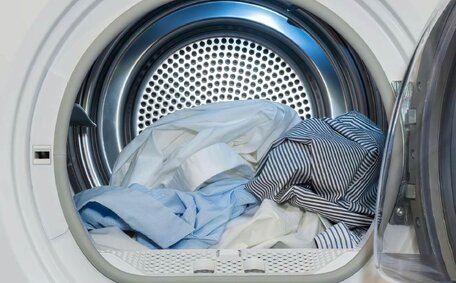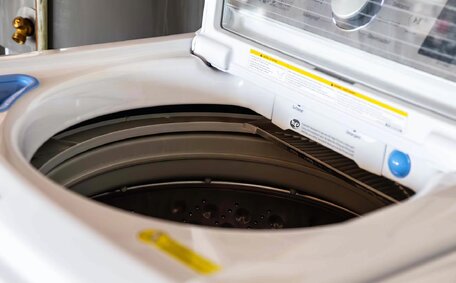What is Pipe Relining?
Pipe relining, similar to CIPP (Cured-In-Place Pipe) restoration, is a cost-effective and technologically sophisticated procedure that installs a new liner within a damaged pipe, using methods that involve either pulling or blowing a resin-saturated liner through the existing pipe structure.
Once installed, the expansion and curing of the inner lining in your system using hot water, steam, or UV light makes pipe lining extremely effective, creating new internal structures.
Pipe relining, equivalent to trenchless pipe repair, represents a significant advancement in the plumbing industry for restoring sewer lines, water pipes, storm drains, gas lines, and beyond. Pipe relining eliminates the need for excavation, offering a quick, budget-friendly, and eco-friendly solution for your property that ensures durability.
Surpassing traditional repair methods, this trenchless technology offers a permanent fix for common pipe issues including root intrusion, cracks, holes, and misaligned joints.
The Pipe Relining Process Explained
The non-invasive pipe relining process involves these crucial steps:
- Inspection - Firstly, a CCTV camera inspection of the damaged pipe allows for a detailed evaluation of the pipe’s condition to determine its suitability for relining.
- Cleaning - Next, high-pressure water jets meticulously clear your drain interiors to ensure optimal adhesion for the relining material. All debris, roots, grease buildup, and corroded material needs to be removed.
- Liner Insertion - After preparation, the liner - a resin-saturated sleeve made of felt or epoxy - is inserted into the damaged pipe through an existing access point, such as a manhole.
- Liner Expansion - The liner is then expanded using heat, steam, or UV light. This technique can be used to fortify the internal structure by bonding the liner seamlessly to the pipe walls.
- Curing - Finally, the liner is cured to harden it into a smooth, jointless new pipe. Curing time is adaptable to your specific requirements, ranging from a couple of hours to several days, based on the tailored materials selected for the job.
By avoiding trench digging, it preserves your garden, driveways, and plumbing infrastructure with minimal interference. This process generates less waste, further establishing pipe relining as an eco-friendly method.
Traditional Pipe Replacement Methods vs Pipe Relining
Homeowners evaluating repair options for compromised pipes often consider the benefits of pipe relining compared to traditional excavation methods and the array of available repair techniques.
Traditional pipe replacement necessitates land excavation to access and remove old pipes, often causing landscape disruption and necessitating the fusing of new piping joints. This creates waste, impacts surrounding infrastructure, and releases carbon emissions from vehicle fuel and production of new materials.
What pipe relining accomplishes is distinct due to its trenchless approach, where a protective liner inserted into the damaged pipe, thus forming a new pipe within.
It keeps excavation and waste, potential causes of pipe damage, to an absolute minimum. Landscaping remains untouched thanks to smaller access pits dug at entry points. Pipe relining is more sustainable because it can be performed without heavy machinery or creating new pipe materials, and it’s adaptable to various pipe types.
Contrastingly, relining offers enduring benefits synonymous with trenchless technologies: a seamless, jointless, corrosion-resistant enhancement that protects pipes against future blockages, leaks, and tree root intrusions. This method not only restores structural integrity but is also effective for clearing blocked drains, enhancing pressure and functional capacity, ensuring there no weaknesses left unaddressed. This displays how pipe relining serves as a longlasting solution pipe maintenance and sustainable option, prolonging the usability of pipes for many years to come.
So when comparing methods, pipe relining your infrastructure clearly comes out on top, more so than traditional pipe replacement, environmentally. The lower carbon footprint, materials used, waste produced, and the preservation of landscapes lead other methods to show pipe relining as a more environmentally friendly and sensible drain repair option.
How Pipe Relining Conserves Resources
Compared to traditional pipe replacement, pipe relining is a highly resource-efficient repair method.
Pipe relining aims to reduce the estimated 5 billion litres of water wasted nationwide due to leakage. Small leaks can escalate into significant losses for your property, highlighting the need for an effective method to eliminate the risk of ongoing damage. Catching and repairing damaged pipes promptly through trenchless relining prevents contamination into soil and saves thousands of litres per property per year.
The use of corrosion-resistant materials in relining significantly enhances the durability of repairs. Solutions like epoxy or UV-cured resins can last 50-100 years without needing repairs or maintenance. This reduces the use of new piping materials and the energy expenditure involved in replacing them multiple times.
Pipe relining reduces water wastage, extends plumbing lifespan, prevents soil contamination and cuts the carbon footprint related to maintenance work.
Minimal Environmental Disruption
A significant environmental benefit of pipe relining is the minimal disruption to surrounding areas, avoiding the extensive excavation characteristic of traditional methods. Contrasting with traditional pipe replacement that requires extensive demolition and heavy machinery, pipe relining is a trenchless method that minimizes environmental impact.
Minimal dig pipe intervention at entry points into the pipe network is the only excavation needed.
By preserving the integrity of your landscape and avoiding contamination risks from pipe leaks, pipe relining prevents negative impacts to local ecosystems. Native vegetation, tree roots, pipe infrastructure, and garden beds all remain undisturbed. The process also quickly fixes leakages, halting immense water waste and soil pollution every year.
The use of robust epoxy or composite pipe liners, which endure for decades, eliminates the need for frequent repairs and protects your home’s plumbing system without constant disruptions. This confirms pipe relining as both a durable maintenance solution and an environmentally respectful choice. Overall, the minimal invasiveness, preservation of landscapes, and sealing of leaks showcase pipe relining as an environmentally responsible pipe repair method.
The Eco-Friendly Materials Used
Pipe relining utilises modern plumbing practices and eco-friendly materials that make the process environmentally sustainable.
The pipe liners themselves are often made of felt or epoxy resin which contain no hazardous chemicals. These flexible liners are saturated with drinking water-safe resins before insertion. Once cured, these become a formidable inner layer within pipes, sealing off any impairment effectively.
Constructed from durable materials such as epoxy or Brawoliner, liners are proven to last 50-100 years without needing replacement, exemplifying sustainability. Their longevity slashes the frequency of pipe repairs and replacement projects which disrupt environments repeatedly.
Choosing durable, inert materials for pipe relining means no new pipes are necessary, further diminishing environmental impact. This strategy significantly lowers energy consumption by negating the need for manufacturing and transporting new pipes. It also curtails the energy used and construction waste resulting from conventional excavation tactics.
Overall, the use of long-lasting, chemically inert epoxy and composite liners makes the pipe relining process very sustainable. The materials conserve resources, preserve landscapes, and withstand corrosion for decades - making it a more environmentally responsible pipe renovation method.
Long-Term Sustainability Benefits
Pipe relining showcases the clear advantages of trenchless technology, such as exceptional sustainability through durable materials and extended pipe lifespan.
The materials used, such as epoxy or composite resins, can significantly enhance the longevity of your pipes, enduring 50-100 years without requiring repairs. This longevity means surrounding environments aren’t repeatedly disrupted. It also saves the raw materials and energy needed to replace pipes frequently.
Pipe relining reduces environmental impact by preserving pipes instead of replacing them, thus avoiding significant waste generation. The absence of new materials slashes manufacturing emissions too.
Pipe relining offers decades of reliable service from a single renovation effort. Liners provide protection from corrosion and leaks, eliminating constant maintenance and mitigating water waste issues.
Pipe relining’s reduced need for repairs, material replacement, carbon output, and landscape disturbance solidifies its status as a sustainable plumbing solution. For property owners, the one-off intervention offers lifelong advantages, environmentally and financially.
Cost and Time Efficiency
Pipe relining not only offers cost and time economies but also less of an impact environment compared to conventional pipe replacement techniques. It circumvents major demolition, replacing ageing infrastructure while trimming costs associated with labor, materials, and waste disposal common in replacement projects.
The typical relining job for your pipes takes just 1-2 days with excavations limited to small access pits only. The absence of trenches also preserves landscaping and prevents property damage. Traditional dig-and-replace methods often take weeks, with some projects dragging on for months depending on pipe accessibility and conditions on-site.
Over time, pipe relining extends the life of your pipes by eliminating the need for continual maintenance, thanks to the durable composite liners that last over 50 years. Replacing pipes might need to be redone every 10-30 years. This results in more manageable lifetime costs for extending the life your pipes.
In terms of return on investment, Recognized as a prudent investment, pipe relining offers excellent worth cost, so reach out to us today to discuss the cost-effective benefits for your property. The upfront expenditure protects pipes for decades and prevents water wastage from leaks. Homeowners can expect to recoup costs in water savings alone within 5 years after relining.
So for superior cost and time-efficiency, pondering 'do I find pipe relining worth it?' comes down to assessing the reduced environmental impact, and increased property value, achieving all this over traditional replacement methods.






